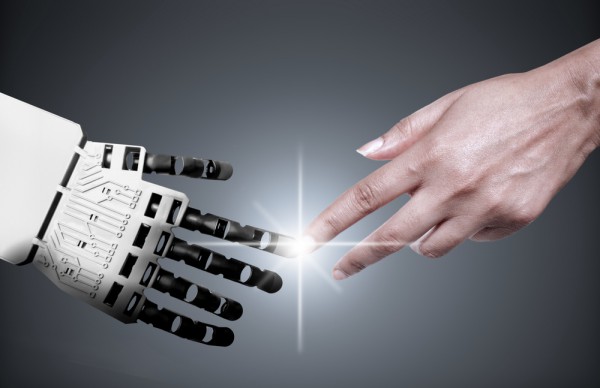The rise of the digital coworker [Q&A]

Talent shortages are affecting many industries at the moment and increasingly enterprises are turning to technologies like robotic process automation (RPA) to fill the gaps.
Now there's a new alternative in the form of the 'digital coworker', designed to work seamlessly alongside a company's human workforce. We spoke to Chaz Perera, CEO and co-founder of Roots Automation, to discover more about this latest innovation.
BN: What is a digital coworker?
CP: We combine machine intelligence and human ingenuity to create intelligent digital coworkers, providing organizations with AI-powered, digitized employees that can think, read and intuit like people.
Digital coworkers dramatically improve efficiency and increase capacity within stretched insurance companies by providing business leaders a turn-key, experienced worker in digital form to support their daily operations.
We serve midmarket and enterprise companies at all stages of the insurance value chain (e.g., MGAs, Brokers, Carriers, TPAs, etc.) across the US, UK, and English speaking Canada.
An example of a digital coworker is Roxanne, our claims assistant digital coworker, who can among other things:
- Transact across all stages of the claims process (from FNOL to subrogation)
- Read and understand data held within insurance and medical documents, emails, forms, systems, etc.
- Make decisions around some aspects of reserving and making payments
- Classify, index, extract and relay claims data and time-sensitive information to people or into systems
- Request additional information from policyholders, claimants, brokers/agents as needed
BN: Can the technology cope with unstructured as well as structured data?
CP: The digital coworker was designed with insurance in mind, by insurance leaders. Digital coworkers are pre-trained to understand and interact with structured and unstructured documents commonly found in insurance -- such as insurance applications, medical bills, or claims-related legal documents.
Our AI-first approach allows digital coworkers to analyze, understand, make decisions, execute work and learn like a person doing the same task. Further, they federate this learning across our entire customer network -- when one digital coworker learns something, they all do.
BN: What role does artificial intelligence play?
CP: Digital coworkers leverage an array of AI/ML to effectively operate. Core to all of this is our patented 'Human in the Loop' that actively learns from our customers' employees (the experts) and shares that knowledge with other digital coworkers.
- The Cognitive Engine -- the 'brain' of the digital coworker -- contains a deep corpus of insurance language, documents, data, systems, and process knowledge that continually evolves and expands.
- Digital Vision -- the 'eyes' of the digital coworker -- which can identify and interact with objects on a computer screen such as buttons, icons, data entry fields, etc. dynamically -- meaning, should the screen object change, move, or disappear, the digital coworker will find it without needing its core logic updated.
- Collaboration and Communication -- the 'mouth and ears' of the digital coworker -- which uses Natural Language Processing to interact with and learn from human colleagues in real-time.
BN: How can digital coworkers improve job satisfaction for the human workforce?
CP: Acquiring talent is hard. The insurance industry, for example, has maintained a 10 percent vacancy rate, and its year-over-year cost to onboard talent is 20 percent higher than planned. So it's imperative that you create the right working environment for the people you have to ensure you can retain them.
Driving higher rates of job satisfaction is directly tied to firstly your perception of your manager; and secondly ensuring your daily activities are focused on the things that leverage your intellect.
While a digital coworker cannot solve the former, it can solve for the latter. Today, talent is too often focused on the wrong things. The average insurance professional, for example, spends 60 percent of their day on non-value add, low complexity tasks.
If you could harness their energy to engaging with the customer, understanding the edges of a risk, or challenging the merits of a claim, improvements in job satisfaction will occur.
Our digital coworkers are trained on the completion of these low complexity insurance activities. For example, our ML models are trained to recognize the activities that humans tend to gloss over because it's underwhelming yet critical, and the digital coworkers either surface these to the appropriate people with the relevant context, or they action the items themselves. An example: Some claims correspondence contain language from attorneys or doctors that if not acted on within a short window, leaves the carrier on the hook for unwarranted claim costs. Claims professionals miss these items 25 percent of the time.
Digital coworkers dramatically improve efficiency and increase capacity within stretched insurance operations teams by providing business leaders a holistic set of advanced tools to effectively automate core aspects of insurance operations.
BN: You're currently targeting the insurance sector, do you see a wider application in other industries?
CP: Our critical focus is on ensuring our digital coworkers can operate across the major use cases for insurance.
Once we have scaled within insurance effectively, we will consider expanding into new sectors.
Photo Credit: Pixelbliss/Shutterstock
